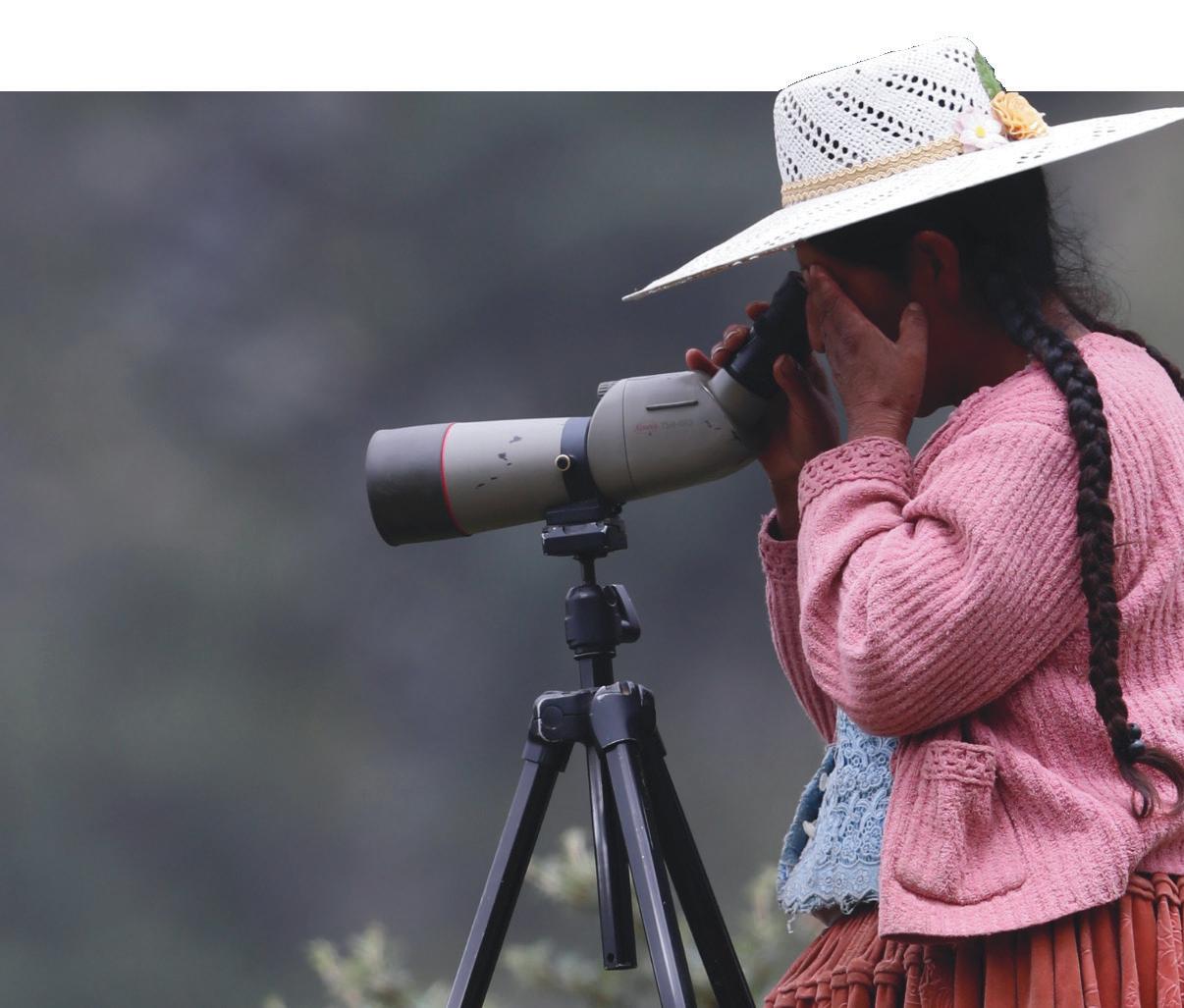
3 minute read
Calling all e-Birders
Quechua woman looking for birds through a birdwatching telescope in montane rainforest All photo credits: Çağan Şekercioğlu
by Paul Gabrielsen
Monte Neate-Clegg (Şekercioğlu lab) says that community science bird data shows different trends in bird populations than professional bird surveys do, especially in developing countries. Researchers look for trends to know whether the number of individuals in a species is increasing, stable or decreasing—with the latter as a warning sign that the species is in trouble. His results are published in Biological Conservation. More observations are needed, he and his colleagues say, both by birders and professionals.
“We hope that this study will encourage birdwatchers to be more conscientious in their recording,” says Neate-Clegg “to think of these data not just as a personal record but as contributing to a wider cause.”
Birding is a long tradition, but as paper guidebooks and life lists have given way to digital records and mobile apps, birders have become more connected, compiling their data into near-real-time global snapshots of where and when birders are seeing species.
In the study, published in Biological Conservation, Neate-Clegg, a PhD candidate and lead author, accessed data from eBird, said to be the world’s largest biodiversity-related community science project with more than 100 million bird sightings contributed each year. Birders submit
Downloading and analyzing eBird data is not an Excel-scale task. The U’s Center for High Performance Computing assisted in processing the data, which includes more than 800 million records. Using observations from the past twenty years, NeateClegg and his fellow ornithologists further filtered the data to focus on the best-quality observations and to match the list of species with those reported by BirdLife International, an independent global partnership of conservation organizations.
Only a little more than a third of the species displayed trends that agreed between the two data sources. Unfortunately, that’s not much better than would have been expected by chance.
Filling the data gaps
Part of the disagreement is due to the different experiences of birdwatching in the tropics as compared to the U.S. Some results of the study were encouraging, though.
As in an earlier study conducted by now alumnus Joshua “JJ” Horns (PhD’19), Neate-Clegg’s study shows that the rate of agreement with BirdLife trends for a species increases as the number of eBird checklists for that species increases. “This suggests that our accuracy will increase as more people gather data in the tropics,” he says. “It would be great to get to the point where we can successfully leverage what will soon exceed 1 billion bird records to estimate population trends.”
Keep watching and listing
With a need for more quality data, Neate-Clegg encourages eBirders to include as much additional information in their checklists as possible. For example, he says, eBirders have the option of recording all species seen or counts “All of these data are important for maximizing the number of checklists we can use while controlling for variation in effort,” he says.
Birding in many different places, and not just hotspots with high species numbers, is also important. “You should be birding everywhere you go,” Çağan Şekercioğlu, principal investigator of the lab and co-author of the research says, “which also has the personal satisfaction of being a pioneer as you are adding data from places with little or no bird data.” (Şekercioğlu is currently ranked fifth in the world for spotting more than 8,000 bird species—more than 76% of all the species that eBirders have ever reported.)
In other words, keep watching the skies. And the trees. And the wetlands. Birders’ efforts do not go unnoticed. “The centurieslong symbiosis between birdwatchers and ornithologists is the best example of the collaboration of community scientists, professional scientists and conservationists,” Şekercioğlu says, who with Neate-Clegg expresses gratitude to all those organizations and birders who collect data.
Birder? Join this cause at ebird.org and at inaturalist.org A different version of this article first appeared in @AtTheU.











